Journal Description
Journal of Functional Morphology and Kinesiology
Journal of Functional Morphology and Kinesiology
is a peer-reviewed, open access journal on functional morphology and kinesiology research dealing with the analysis of structure, function, development, evolution of cells and tissues of the musculoskeletal system and the whole body, published quarterly online by MDPI.
- Open Access— free for readers, with article processing charges (APC) paid by authors or their institutions.
- High Visibility: indexed within ESCI (Web of Science), Scopus, PubMed, PMC, FSTA, and other databases.
- Journal Rank: CiteScore - Q2 (Physical Therapy, Sports Therapy and Rehabilitation)
- Rapid Publication: manuscripts are peer-reviewed and a first decision is provided to authors approximately 17.6 days after submission; acceptance to publication is undertaken in 3.6 days (median values for papers published in this journal in the second half of 2023).
- Recognition of Reviewers: reviewers who provide timely, thorough peer-review reports receive vouchers entitling them to a discount on the APC of their next publication in any MDPI journal, in appreciation of the work done.
Latest Articles
Incidence of a Multicomponent Physical Exercise Program on Body Composition in Overweight or Obese People Aged 60 Years or Older from Chile
J. Funct. Morphol. Kinesiol. 2024, 9(2), 81; https://0-doi-org.brum.beds.ac.uk/10.3390/jfmk9020081 - 24 Apr 2024
Abstract
This research aimed to explore the changes produced in body mass index (BMI), fat mass percentage (FMP), muscle mass percentage (MMP), and visceral fat percentage (VFP) in 60-year-old or over overweight or obese people after a multicomponent exercise program. This quasi-experimental study involved
[...] Read more.
This research aimed to explore the changes produced in body mass index (BMI), fat mass percentage (FMP), muscle mass percentage (MMP), and visceral fat percentage (VFP) in 60-year-old or over overweight or obese people after a multicomponent exercise program. This quasi-experimental study involved 70 overweight or obese older people between 60 and 86 years old (M = 73.15; SD = 5.94) who were randomly assigned to a control group (CG, n = 35) and an experimental group (EG, n = 35). At the beginning and at the end of the intervention program, anthropometric and body composition data were collected. The results showed an increase in BMI after the intervention in the CG (p = 0.010) and a decrease in the EG (p < 0.001). The results regarding the FMP indicate a significant decrease in the EG (p < 0.001) after the intervention, as occurs with the VFP (p = 0.003). The MMP increased in the EG (p < 0.001) after the intervention program. Regarding gender, statistically significant differences were found in the MMP after the intervention (p = 0.025), with higher percentages in men in the EG. VFP decreased in both men (p = 0.005) and women (p = 0.019) in the EG. From the results obtained, we can say that a 6-month multicomponent program produces a decrease in BMI, FMP, and VFP and an increase in MMP in its participants. This type of intervention seems to produce a greater increase in muscle mass in men than in women and a decrease in VFP in both genders.
Full article
(This article belongs to the Special Issue Research on Sports Nutrition: Body Composition and Performance 3.0)
►
Show Figures
Open AccessReview
Regenerative Anterior Cruciate Ligament Healing in Youth and Adolescent Athletes: The Emerging Age of Recovery Science
by
John Nyland, Michael N. Sirignano, Jarod Richards and Ryan J. Krupp
J. Funct. Morphol. Kinesiol. 2024, 9(2), 80; https://doi.org/10.3390/jfmk9020080 - 23 Apr 2024
Abstract
Anterior cruciate ligament (ACL) injuries mainly arise from non-contact mechanisms during sport performance, with most injuries occurring among youth or adolescent-age athletes, particularly females. The growing popularity of elite-level sport training has increased the total volume, intensity and frequency of exercise and competition
[...] Read more.
Anterior cruciate ligament (ACL) injuries mainly arise from non-contact mechanisms during sport performance, with most injuries occurring among youth or adolescent-age athletes, particularly females. The growing popularity of elite-level sport training has increased the total volume, intensity and frequency of exercise and competition loading to levels that may exceed natural healing capacity. Growing evidence suggests that the prevailing mechanism that leads to non-contact ACL injury from sudden mechanical fatigue failure may be accumulated microtrauma. Given the consequences of primary ACL injury on the future health and quality of life of youth and adolescent athletes, the objective of this review is to identify key “recovery science” factors that can help prevent these injuries. Recovery science is any aspect of sports training (type, volume, intensity, frequency), nutrition, and sleep/rest or other therapeutic modalities that may prevent the accumulated microtrauma that precedes non-contact ACL injury from sudden mechanical fatigue failure. This review discusses ACL injury epidemiology, current surgical efficacy, the native ACL vascular network, regional ACL histological complexities such as the entheses and crimp patterns, extracellular matrix remodeling, the concept of causal histogenesis, exercise dosage and ligament metabolism, central nervous system reorganization post-ACL rupture, homeostasis regulation, nutrition, sleep and the autonomic nervous system. Based on this information, now may be a good time to re-think primary ACL injury prevention strategies with greater use of modified sport training, improved active recovery that includes well-planned nutrition, and healthy sleep patterns. The scientific rationale behind the efficacy of regenerative orthobiologics and concomitant therapies for primary ACL injury prevention in youth and adolescent athletes are also discussed.
Full article
(This article belongs to the Section Sports Medicine and Nutrition)
►▼
Show Figures
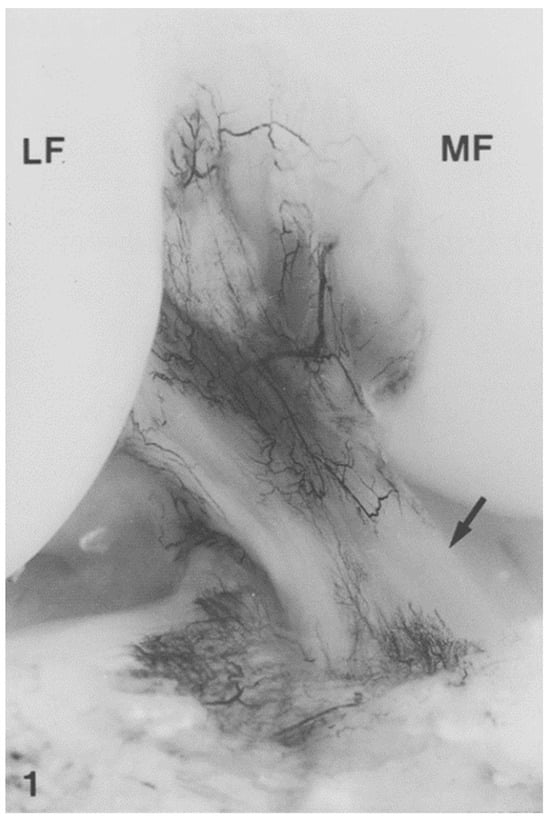
Figure 1
Open AccessArticle
Do Longer Fins Improve Ocean Rescues? A Comprehensive Investigation into Lifeguard Performance and Physiological Impact
by
Isaac Ignacio-Rodríguez, Roberto Barcala-Furelos, Ezequiel Rey and Marcos Sanmartín-Montes
J. Funct. Morphol. Kinesiol. 2024, 9(2), 79; https://0-doi-org.brum.beds.ac.uk/10.3390/jfmk9020079 - 19 Apr 2024
Abstract
Coastal environments present dynamic challenges necessitating rapid and efficient responses during aquatic emergencies. Lifeguards, as pivotal links in the intervention chain, rely on various tools, with rescue time being paramount. The choice of fins, specifically long versus short ones, plays a critical role
[...] Read more.
Coastal environments present dynamic challenges necessitating rapid and efficient responses during aquatic emergencies. Lifeguards, as pivotal links in the intervention chain, rely on various tools, with rescue time being paramount. The choice of fins, specifically long versus short ones, plays a critical role in optimizing lifeguard performance during rescues. This randomized cross-over study explores the impact of flipper size on ocean rescues, employing a sample of 14 lifeguards. Long fins (LFs) and short fins (SFs) were compared in terms of rescue time (RT) and physiological load (PL). Tests included ocean rescues without fins (R), with LF (R-LF), and with SF (R-SF). Variables recorded encompassed swim approach time, tow-in time, overall rescue time, perceived exertion rates (RPEs), and post-rescue lactate concentration. Long fins demonstrated superior performance in swim approach and tow-in times compared to both short fins and no fins (p < 0.001). Overall rescue time favored long fins significantly (p < 0.001), indicating their efficiency in practical ocean rescue scenarios. Physiologically, long fins induced lower perceived exertion in arms (p = 0.033) compared to short fins. Lactate concentrations post-rescue revealed no significant differences (p > 0.05). This study demonstrates that long fins significantly improve lifeguard performance during ocean rescues, reducing rescue times and alleviating arm fatigue.
Full article
(This article belongs to the Section Athletic Training and Human Performance)
►▼
Show Figures

Figure 1
Open AccessReview
Kinesiophobia in Injured Athletes: A Systematic Review
by
Jatin P. Ambegaonkar, Matthew Jordan, Kelley R. Wiese and Shane V. Caswell
J. Funct. Morphol. Kinesiol. 2024, 9(2), 78; https://0-doi-org.brum.beds.ac.uk/10.3390/jfmk9020078 - 19 Apr 2024
Abstract
Athletes have a high risk of injury. Kinesiophobia is a condition in which an individual experiences a fear of physical movement and activity after an injury occurs. Our purpose was to systematically review the literature about Kinesiophobia in athletes. A systematic review was
[...] Read more.
Athletes have a high risk of injury. Kinesiophobia is a condition in which an individual experiences a fear of physical movement and activity after an injury occurs. Our purpose was to systematically review the literature about Kinesiophobia in athletes. A systematic review was conducted in February 2023 using PubMed, CINAHL, SPORTDiscus, Web of Science, Cochrane Library, and Medline. Studies were included if they were peer-reviewed, in English, within the last 20 years and included athletes who had been injured and tracked Kinesiophobia. Articles were checked for quality via the modified Downs and Black checklist. Fourteen studies were included in the review and had an average “fair” quality score. Authors examined Kinesiophobia in injured athletes with mostly lower-extremity injuries. Kinesiophobia was associated with lower physical and mental outcomes. Kinesiophobia exists in athletes and can affect both physical and mental factors. The Tampa Scale of Kinesiophobia (TSK) was the most common tool used to examine Kinesiophobia. Common mental factors associated with Kinesiophobia include anxiety, low confidence, and fear avoidance.
Full article
(This article belongs to the Special Issue Efficiency in Kinesiology: Innovative Approaches in Enhancing Motor Skills for Athletic Performance 2.0)
►▼
Show Figures
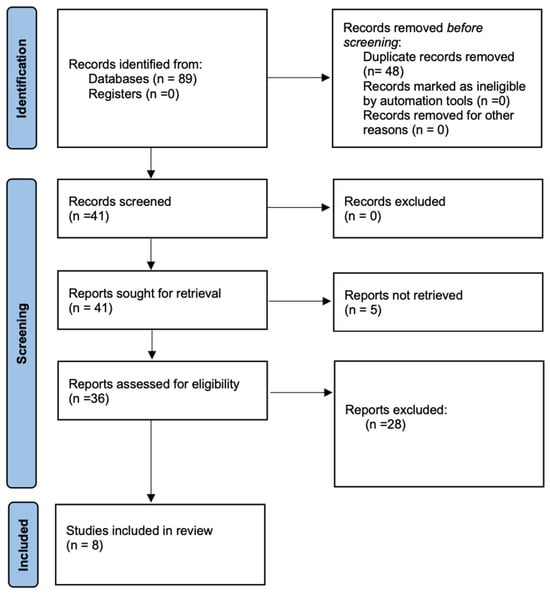
Figure 1
Open AccessArticle
The Flexion Relaxation Phenomenon in Patients with Radiculopathy and Low Back Pain: A Cross-Sectional Study
by
Marijan Peharec, Stanislav Peharec, Vedran Srhoj-Egekher, Romana Jerković, Dean Girotto and Gordana Starčević-Klasan
J. Funct. Morphol. Kinesiol. 2024, 9(2), 77; https://0-doi-org.brum.beds.ac.uk/10.3390/jfmk9020077 - 19 Apr 2024
Abstract
Although the measurements of the lumbar spine and pelvic flexion have shown that subjects with radiculopathy exhibited greater decreases of motion when compared with subjects with low back pain, there is still a lack of evidence regarding the changes in flexion relaxation ratio
[...] Read more.
Although the measurements of the lumbar spine and pelvic flexion have shown that subjects with radiculopathy exhibited greater decreases of motion when compared with subjects with low back pain, there is still a lack of evidence regarding the changes in flexion relaxation ratio in patients with radiculopathy. The aims of this study were to investigate the flexion relaxation ratio and flexion of the lumbar spine and pelvis in subjects with low back pain (LBP) and LBP with radiculopathy (LBPR) in comparison with healthy subjects (CG—control group). A total of 146 participants were divided in three groups: LBP patients (54 males; 21 females); LBPR patients (26 males; 11 females); and CG subjects (16 males; 18 females). The lumbar spine and pelvis flexion was recorded using optoelectronic motion capture system. The electrical activity of the erector spinae muscles was assessed by surface electromyography during flexion-extension movements. Comparisons between groups were made using one-way ANOVA tests and Mann–Whithney U test with the level of statistical significance at 0.05. The lumbar and pelvic flexion and electromyography of the erector spinae muscle showed significant differences between LBP and LBPR patients compared to CG. Patients LBPR showed significantly smaller angles of lumbar and pelvic flexion compared to LBP patients and CG. An increase in the erector spinae muscle activity during flexion was also observed in patients with radiculopathy. The increased muscular activity of the erector spinae is related to the reduced flexion of the lumbar spine in order to protect the lumbar spine structure. Measurements of trunk, lumbar spine and pelvic flexion, and the flexion relaxation ratio may allow us to predict better outcomes or responsiveness to treatment of LBPR patients in the future.
Full article
(This article belongs to the Topic New Advances in Musculoskeletal Disorders)
►▼
Show Figures
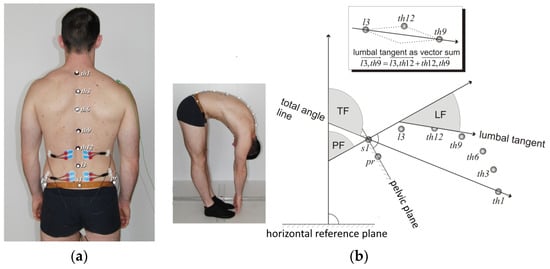
Figure 1
Open AccessArticle
Effects of CurraNZ, a New Zealand Blackcurrant Extract during 1 Hour of Treadmill Running in Female and Male Marathon des Sables Athletes in Hot Conditions: Two Case Studies
by
Mark E. T. Willems, Patrick W. Bray, Holly M. Bassett, Tilly J. Spurr and Andrew T. West
J. Funct. Morphol. Kinesiol. 2024, 9(2), 76; https://0-doi-org.brum.beds.ac.uk/10.3390/jfmk9020076 - 18 Apr 2024
Abstract
Four weeks before competition in the 2023 Marathon des Sables, a 6-stage, ~250 km running event in the Sahara Desert, we examined the effects of a 7-day intake of New Zealand blackcurrant extract (210 mg anthocyanins per day) on 1 h treadmill running-induced
[...] Read more.
Four weeks before competition in the 2023 Marathon des Sables, a 6-stage, ~250 km running event in the Sahara Desert, we examined the effects of a 7-day intake of New Zealand blackcurrant extract (210 mg anthocyanins per day) on 1 h treadmill running-induced physiological and metabolic responses in the heat (~34 °C, relative humidity: ~30%) in non-acclimatized amateur female and male athletes (age: 23, 38 yrs, BMI: 24.2, 28.4 kg·m−2, body fat%: 29.2, 18.8%,
(This article belongs to the Section Sports Medicine and Nutrition)
►▼
Show Figures

Figure 1
Open AccessArticle
The Effect of Sex and Different Repetition Maximums on Kinematics and Surface Electromyography in the Last Repetition of the Barbell Back Squat
by
Andreas Hegdahl Gundersen, Hallvard Nygaard Falch, Andrea Bao Fredriksen and Roland van den Tillaar
J. Funct. Morphol. Kinesiol. 2024, 9(2), 75; https://0-doi-org.brum.beds.ac.uk/10.3390/jfmk9020075 - 18 Apr 2024
Abstract
During the ascent phase of a maximal barbell back squat after an initial acceleration, a deceleration region occurs as the result of different biomechanical factors. This is known as the sticking region. However, whether this region is similar in the last repetition of
[...] Read more.
During the ascent phase of a maximal barbell back squat after an initial acceleration, a deceleration region occurs as the result of different biomechanical factors. This is known as the sticking region. However, whether this region is similar in the last repetition of different repetition maximums and if sex has an impact on biomechanics of this region are not known. Therefore, this study investigated the effect of sex (men/women) and repetition maximum (1-, 3-, 6-, and 10RM) on kinematics and surface electromyography around the sticking region. Twenty-six resistance-trained individuals comprising 13 men (body mass: 82.2 ± 8.7; age: 23.6 ± 1.9; height: 181.1 ± 6.5) and 13 women (body mass: 63.6 ± 6.6; age: 23.9 ± 4.5; height: 166.0 ± 4.5) participated in the study. The main findings were that women, in comparison to men, displayed larger trunk lean and lower hip extension angles in the sticking region, possibly due to different hip/knee extensor strength ratios. Moreover, an inverse relationship was discovered between repetition range and timing from V0 to Vmax2, in which lower repetition ranges (1- and 3RM) were shorter in Vmax2 compared to higher ranges (6- and 10RM). It was concluded that this occurrence is due to more moments of inertia in lower repetition ranges. Our findings suggest that both sex and repetition range might induce different requirements during the squat ascent.
Full article
(This article belongs to the Special Issue Efficiency in Kinesiology: Innovative Approaches in Enhancing Motor Skills for Athletic Performance 2.0)
►▼
Show Figures
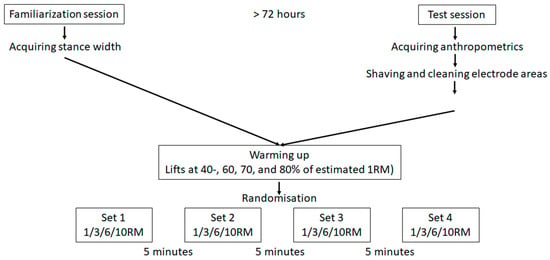
Figure 1
Open AccessArticle
Blood Flow Restriction during Walking Does Not Impact Body Composition or Performance Measures in Highly Trained Runners
by
Ashley A. Herda, Christopher J. Cleary, Dana Young, KathleenMae B. Rogers, Santiago E. Umana Segura, Christopher Bernard, Lisa M. Vopat and Bryan G. Vopat
J. Funct. Morphol. Kinesiol. 2024, 9(2), 74; https://0-doi-org.brum.beds.ac.uk/10.3390/jfmk9020074 - 13 Apr 2024
Abstract
Blood flow restriction (BFR) is a commonly used training modality that has been demonstrated to enhance muscle characteristics such as size and function. The purpose of this study was to determine if a 4-week walking program with or without BFR in healthy, active
[...] Read more.
Blood flow restriction (BFR) is a commonly used training modality that has been demonstrated to enhance muscle characteristics such as size and function. The purpose of this study was to determine if a 4-week walking program with or without BFR in healthy, active adults has an effect on body composition, anaerobic, and aerobic running performance. Thirty-three participants, randomized among three groups, completed the walking program, which included five sets of 2 min walking intervals with 1 min rest, with or without BFR, or 10 min walking with BFR. Assessments completed before and after the walking program included body composition, 40-yard sprints, and a VO2MAX test on a treadmill. A two-way ANOVA revealed no changes among the groups nor for any variables at any time (p > 0.05). Additionally, one main effect for time indicated the VO2 at V-slope threshold was greater following training for all groups combined (p = 0.001). The results demonstrate that low volume and intensity walking with BFR for 4 weeks did not provide a sufficient stimulus for changing body composition or performance metrics in a group of very active adults. Longer or more isolated exposure of BFR on the limbs may contribute to more pronounced adaptations.
Full article
(This article belongs to the Special Issue Research on Sports Nutrition: Body Composition and Performance 3.0)
Open AccessArticle
Does Pelvic Tilt Angle Influence the Isokinetic Strength of the Hip and Knee Flexors and Extensors?
by
Eleftherios Kellis, Athanasios Konstantopoulos, Georgios Salonikios and Athanasios Ellinoudis
J. Funct. Morphol. Kinesiol. 2024, 9(2), 73; https://0-doi-org.brum.beds.ac.uk/10.3390/jfmk9020073 - 12 Apr 2024
Abstract
The purpose of this study was to examine the effect of pelvic tilt angle on maximum hip and knee muscles’ strength and antagonist/agonist strength ratios. Twenty-one young males and females performed maximum isokinetic concentric knee extension–flexion and hip extension–flexion efforts at 60°·s−1
[...] Read more.
The purpose of this study was to examine the effect of pelvic tilt angle on maximum hip and knee muscles’ strength and antagonist/agonist strength ratios. Twenty-one young males and females performed maximum isokinetic concentric knee extension–flexion and hip extension–flexion efforts at 60°·s−1, 120°·s−1, and 180°·s−1 from three positions: anterior, neutral, and posterior pelvic tilt. Peak torques and knee flexor-to-extensor and hip flexor-to-extensor torque ratios were analyzed. An analysis of variance showed that peak hip extensor torque was significantly greater in the anterior pelvic tilt condition compared to either neutral or posterior pelvic tilt angles (p > 0.05). No effects of changing pelvic tilt angle on hip flexor, knee flexor, or knee extension values were found (p > 0.05). The hip flexor-to-extensor torque ratio decreased (p < 0.05) in the anterior pelvic tilt position relative to the other positions, while no difference in the knee flexor-to-extensor ratio between pelvic positions was observed (p > 0.05). This study shows that an increased anterior pelvic tilt affects the maximum isokinetic strength of the hip extensors, supporting previous suggestions regarding the link between pelvic position and hip and knee muscle function. Isokinetic testing from an anterior pelvic tilt position may alter the evaluation of hip flexion/extension strength.
Full article
(This article belongs to the Special Issue Skeletal Muscle Mechanics)
►▼
Show Figures
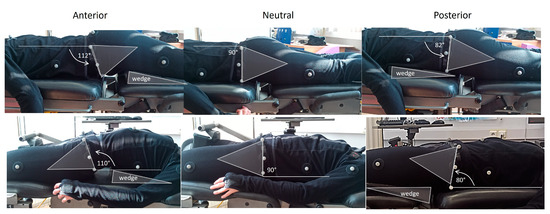
Figure 1
Open AccessReview
Surgical Outcomes and Complications of Custom-Made Prostheses in Upper Limb Oncological Reconstruction: A Systematic Review
by
Camillo Fulchignoni, Silvia Pietramala, Ivo Lopez, Giovan Giuseppe Mazzella, Chiara Comisi, Carlo Perisano, Lorenzo Rocchi and Tommaso Greco
J. Funct. Morphol. Kinesiol. 2024, 9(2), 72; https://0-doi-org.brum.beds.ac.uk/10.3390/jfmk9020072 - 11 Apr 2024
Abstract
Bone tumors of the upper limb are a common cause of bone pain and pathological fractures in both old and young populations. Surgical reconstruction and limb salvage have become valid options for these patients despite this kind of surgery being challenging due to
[...] Read more.
Bone tumors of the upper limb are a common cause of bone pain and pathological fractures in both old and young populations. Surgical reconstruction and limb salvage have become valid options for these patients despite this kind of surgery being challenging due to the need for wide bone resection and the involvement of surrounding soft tissues. Computer-assisted technology helps the surgeon in pre-operative planning and in designing customized implants. The aim of this study was to investigate the surgical outcomes and complications of custom-made prostheses in oncologic reconstruction of the upper limb and if they are reliable options for patients suffering from aggressive tumors. An electronic search on PubMed, Google Scholar, and Web of Knowledge was conducted to identify all available articles on the use of custom-made prostheses in oncological resections of the upper limb. Twenty-one studies were included in the review, comprising a total of 145 patients with a mean age of 33.68 years. The bone involved was the humerus in 93 patients, and the radius was involved in 36 patients. There were only six cases involving proximal ulna, three cases involving the scapula, and seven cases involving the elbow as well as soft tissues around it. The most frequent primary tumor was the giant cell tumor, with 36 cases, followed by osteosarcoma with 25 cases, Ewing Sarcoma with 17 cases, and Chondrosarcoma with 7 total cases. Forty patients were affected by bone metastases (such as renal cell cancer, breast cancer, melanoma, and rectal cancer) or hematologic diseases involving bone (lymphoma, myeloma, or non-Hodgkin disease). Custom-made prostheses are a viable option for patients who suffer from malignant tumors in their upper limbs. They are a reliable aid for surgeons in cases of extensive resections.
Full article
(This article belongs to the Section Functional Anatomy and Musculoskeletal System)
►▼
Show Figures
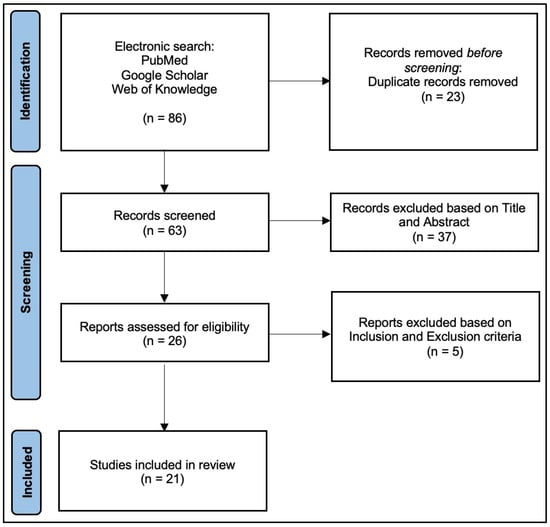
Figure 1
Open AccessCase Report
Safety of a Porous Hydroxyapatite Bone Substitute in Orthopedics and Traumatology: A Multi-Centric Clinical Study
by
Leo Massari, Achille Saracco, Sebastiano Marchesini, Edoardo Gambuti, Alessandro Delorenzi and Gaetano Caruso
J. Funct. Morphol. Kinesiol. 2024, 9(2), 71; https://0-doi-org.brum.beds.ac.uk/10.3390/jfmk9020071 - 11 Apr 2024
Abstract
The development of biomaterials in recent years has made it possible to broaden their use in the surgical field. Although iliac crest bone graft harvesting currently remains the gold standard as an autograft, the properties of hydroxyapatite bone substitutes appear to be beneficial.
[...] Read more.
The development of biomaterials in recent years has made it possible to broaden their use in the surgical field. Although iliac crest bone graft harvesting currently remains the gold standard as an autograft, the properties of hydroxyapatite bone substitutes appear to be beneficial. The first fundamental step to consider is the safety of using these devices. The purpose of this retrospective cohort study is to consider all the adverse events observed in our population and assess their relationships with the bone substitute device. The population analyzed consisted of patients undergoing trauma osteosynthesis with at least one implanted porous hydroxyapatite device. We considered a court of 114 patients treated at “Azienda Ospedaliera Universitaria di Ferrara—U.O. di Ortopedia e Traumatologia” in the period from January 2015 to December 2022. Upon analyzing our population, no adverse events related to the device emerged. Taking into consideration different study groups from other National Hospital Centers, no critical issues were detected except for three cases of extrusion of the biomaterial. It is necessary to clarify that bone substitutes cannot replace compliance with the correct principles linked to the biomechanics of osteosynthesis. This report outlines a safety profile for the use of these devices as bone substitutes in trauma orthopedic surgery.
Full article
(This article belongs to the Section Kinesiology and Biomechanics)
►▼
Show Figures
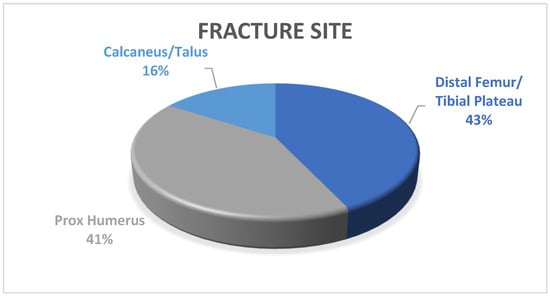
Figure 1
Open AccessArticle
A Comparison between Core Stability Exercises and Muscle Thickness Using Two Different Activation Maneuvers
by
Ioannis Tsartsapakis, Ioanna Bagioka, Flora Fountoukidou and Eleftherios Kellis
J. Funct. Morphol. Kinesiol. 2024, 9(2), 70; https://0-doi-org.brum.beds.ac.uk/10.3390/jfmk9020070 - 11 Apr 2024
Abstract
Core stability training is crucial for competitive athletes, individuals who want to improve their health and physical performance, and those undergoing clinical rehabilitation. This study compared the ultrasound (US) muscle thickness of the abdominals and lumbar multifidus (LM) muscles between seven popular trunk
[...] Read more.
Core stability training is crucial for competitive athletes, individuals who want to improve their health and physical performance, and those undergoing clinical rehabilitation. This study compared the ultrasound (US) muscle thickness of the abdominals and lumbar multifidus (LM) muscles between seven popular trunk stability exercises performed using hollowing and bracing maneuvers. Forty-four healthy young adults, aged between 21 and 32 years, performed a plank, bird dog, beast crawl, dead bug, Pilates tap, bridge, and side planks using the bracing and the hollowing maneuver. The thickness of the transversus abdominis (TrA), internal oblique (IO), and LM muscles was measured simultaneously using two ultrasound machines. Analysis of variance designs indicated that during hollowing, the bird dog and side plank exercises resulted in the greatest increase in the muscle’s relative thickness overall. The relative thickness of all muscles was significantly greater (p < 0.001) during hollowing (22.7 ± 7.80 to 106 ± 24.5% of rest) compared to bracing (18.7 ± 7.40 to 87.1 ± 20.9% of rest). The TrA showed the greatest increase in thickness (p < 0.001) compared to the IO and LM. Additionally, the IO had a greater increase in thickness (p < 0.001) than the LM. In conclusion, our findings indicate that the bird dog and side plank exercises, when performed with hollowing, showed the most significant total muscle thickness increase. Notably, the hollowing maneuver enhances the thickness of the TrA, IO, and LM muscles more than the bracing maneuver. This contributes to the discussion on optimal strategies for dynamic core stabilization.
Full article
(This article belongs to the Section Functional Anatomy and Musculoskeletal System)
►▼
Show Figures

Figure 1
Open AccessArticle
Relationship between Femur Mineral Content and Local Muscle Strength and Mass
by
Bruno V. R. Ramos, Danilo A. Massini, Tiago A. F. Almeida, Eliane A. Castro, Mário C. Espada, Cátia C. Ferreira, Ricardo A. M. Robalo, Anderson G. Macedo and Dalton M. Pessôa Filho
J. Funct. Morphol. Kinesiol. 2024, 9(2), 69; https://0-doi-org.brum.beds.ac.uk/10.3390/jfmk9020069 - 09 Apr 2024
Abstract
Among the stimuli able to prevent early decreases in bone mineralization, exercise has a noticeable role per se as the source of mechanical stimulus or through lean tissue enlargement by its increasing of tensional stimulus. However, prevention strategies, including exercise, generally do not
[...] Read more.
Among the stimuli able to prevent early decreases in bone mineralization, exercise has a noticeable role per se as the source of mechanical stimulus or through lean tissue enlargement by its increasing of tensional stimulus. However, prevention strategies, including exercise, generally do not establish the moment in life when attention should begin to be paid to bone integrity, according to age group- and sex-related differences. Thus, this study analyzed the relationship between variables from the diagnosis of total and regional body composition, muscle strength, and bone mineral content (BMC) of femurs in young adult males. Thirty-four young Caucasian men (24.9 ± 8.6 years) had their body composition and bone density assessed by dual X-ray absorptiometry. The subjects performed a one-repetition maximum test (1-RM) in a bench press, front pulley, seated-row, push press, arm curl, triceps pulley, leg flexion, leg extension, and 45° leg press for the assessment of muscle strength in upper and lower limbs in single- and multi-joint exercises. Lean tissue mass in the trunk and upper and lower limbs were related to femoral BMC (Pearson coefficient ranging from 0.55 to 0.72, p < 0.01), and 1-RM values for different exercises involving both upper and lower limbs also correlated with femoral BMC (Pearson coefficients ranging from 0.34 to 0.46, p < 0.05). Taken together, these correlations suggest that muscle mass and strength are positively linked with the magnitude of femoral mass in men, even in early adulthood. Hence, the importance of an enhanced muscle mass and strength to the health of femoral bones in young adults was highlighted.
Full article
(This article belongs to the Special Issue Skeletal Muscle Mechanics)
►▼
Show Figures

Figure 1
Open AccessArticle
Female Lower Body Muscle Forces: A Musculoskeletal Modeling Comparison of Back Squats, Split Squats and Good Mornings
by
Jessica S. Jaeggi, Basil Achermann and Silvio R. Lorenzetti
J. Funct. Morphol. Kinesiol. 2024, 9(2), 68; https://0-doi-org.brum.beds.ac.uk/10.3390/jfmk9020068 - 08 Apr 2024
Abstract
The aim of this study was to analyze lower leg muscle forces during strength exercises such as back squats, good mornings and split squats, with a particular emphasis on females. By focusing on females, who are more vulnerable to anterior cruciate ligament injuries,
[...] Read more.
The aim of this study was to analyze lower leg muscle forces during strength exercises such as back squats, good mornings and split squats, with a particular emphasis on females. By focusing on females, who are more vulnerable to anterior cruciate ligament injuries, we aimed to better understand muscle engagement and its role in injury prevention. Eight participants were monitored during exercises with a barbell load of 25% of body weight and, during the back squat, an additional 50% load. The analysis was conducted using personalized musculoskeletal models, electromyography (EMG) and Vicon motion capture systems to assess various muscle groups, including the m. gluteus maximus and m. gluteus medius, as well as the hamstring and quadriceps muscles. The back squat produced the highest forces for the quadriceps muscles, particularly the rectus femoris (>25 N/kg), as well as in the back leg during the split squat (>15 N/kg). The gluteal muscles were most active during good mornings and in the front leg of the split squat, especially the m. gluteus maximus medial part (>20 N/kg). The hamstrings generated the highest muscle forces in the front leg of the split squat, with the greatest forces observed in the m. semimembranosus. Our research highlights how musculoskeletal modeling helps us to understand the relationship among muscles, joint angles and anterior cruciate ligament injury risks, especially in strength training females. The results emphasize the need for personalized exercise guidance and customized models to make strength training safer and more effective.
Full article
(This article belongs to the Special Issue Skeletal Muscle Mechanics)
►▼
Show Figures
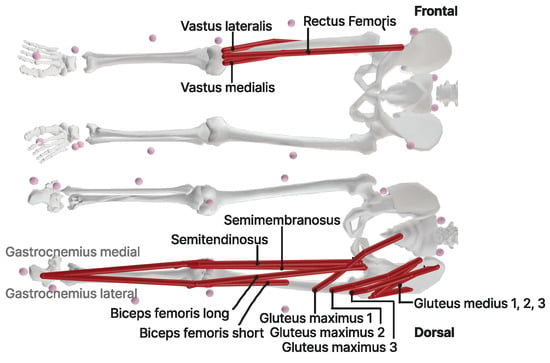
Figure 1
Open AccessArticle
Does Radial Extracorporeal Shockwave Therapy Applied to the Achilles Tendon Influence Ankle Functionality?
by
Younglan Joo, Wonjae Choi, Jihye Jung, Hyunjoong Kim, Sungeon Park, Sangbong Lee and Seungwon Lee
J. Funct. Morphol. Kinesiol. 2024, 9(2), 67; https://0-doi-org.brum.beds.ac.uk/10.3390/jfmk9020067 - 08 Apr 2024
Abstract
This study aimed to determine the effectiveness of radial extracorporeal shockwave therapy (rESWT) in enhancing ankle function in patients with Achilles tendon injuries. The choice of rESWT was based on previous success in the treatment of musculoskeletal conditions. The study involved an intervention
[...] Read more.
This study aimed to determine the effectiveness of radial extracorporeal shockwave therapy (rESWT) in enhancing ankle function in patients with Achilles tendon injuries. The choice of rESWT was based on previous success in the treatment of musculoskeletal conditions. The study involved an intervention group that received rESWT, and a control group that received sham therapy. The results revealed that rESWT led to significant improvements in single-leg vertical jump (d = 0.55, p < 0.05), indicating enhanced power generation and ankle functionality that were not observed in the control group. Additionally, the therapy resulted in increased ankle mobility, as observed by improvements in plantar flexion and heel-rise tests. Interestingly, these functional gains were not accompanied by changes in the Achilles tendon stiffness, suggesting that the benefits of rESWT may be more functional than structural. This study highlights rESWT as a promising tool for rehabilitation, particularly following Achilles tendon injuries. The study concluded that, although rESWT appears to improve certain aspects of ankle function, further studies with a larger and more diverse population over a longer period are necessary to confirm these findings and establish comprehensive treatment protocols.
Full article
(This article belongs to the Special Issue Advances in Musculoskeletal Physiotherapy)
►▼
Show Figures
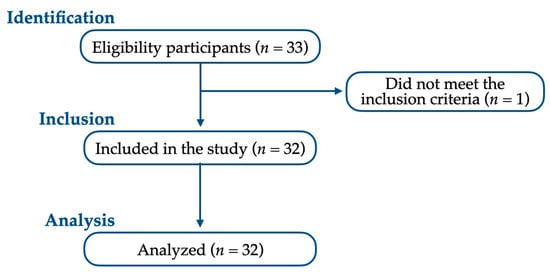
Figure 1
Open AccessArticle
Net Heart Rate for Estimating Oxygen Consumption in Active Adults
by
José A. Bragada, Pedro M. Magalhães, Eric São-Pedro, Raul F. Bartolomeu and Jorge E. Morais
J. Funct. Morphol. Kinesiol. 2024, 9(2), 66; https://0-doi-org.brum.beds.ac.uk/10.3390/jfmk9020066 - 07 Apr 2024
Abstract
The aim of this study was to verify the accuracy of predicting oxygen consumption (O2) in predominantly aerobic activities based on net heart rate (netHR), sex, and body mass index (BMI) in active adults. NetHR is the value of the difference
[...] Read more.
The aim of this study was to verify the accuracy of predicting oxygen consumption (O2) in predominantly aerobic activities based on net heart rate (netHR), sex, and body mass index (BMI) in active adults. NetHR is the value of the difference between the resting HR (HRrest) and the average HR value obtained during a given session or period of physical activity. These activities must be continuous, submaximal, and of a stabilized intensity. The magnitude of the netHR depends mainly on the intensity of the exercise. The HR is measured in beats per minute (bpm). A total of 156 participants, 52 women and 104 men, between the ages of 18 and 81, had their netHR and net oxygen intake (netVO2) assessed. There were 79 participants in group 1 (prediction sample) (52 males and 27 females). There were 77 people in group 2 (validation sample) (52 males and 25 females). The results of the multiple linear regression showed that netVO2 (R2 = 85.2%, SEE = 3.38) could be significantly predicted by sex (p < 0.001), netHR (p < 0.001), and BMI (p < 0.001). The Bland–Altman plots satisfied the agreement requirements, and the comparison of the measured and estimated netVO2 revealed non-significant differences with a trivial effect size. We calculated the formula NetVO2 (mL/(kg·min)) = 16 + 3.67 (sex) + 0.27 (netHR) − 0.57 (BMI) to predict netVO2, where netVO2 is the amount of oxygen uptake (mL/(kg·min)) above the resting value, netHR is the heart rate (beats per minute) above the resting value measured during exercise, sex is equal to zero for women and one for men, and BMI is the body mass index. In addition, based on the knowledge of VO2, it was possible to estimate the energy expenditure from a particular training session, and to determine or prescribe the exercise intensity in MET (metabolic equivalent of task).
Full article
(This article belongs to the Special Issue Advances in Physiology of Training)
►▼
Show Figures
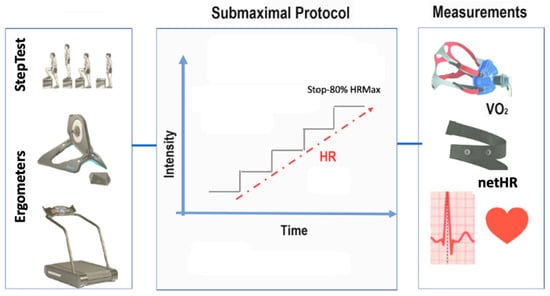
Figure 1
Open AccessCommunication
Mechanical and Contractile Properties of Knee Joint Muscles after Sports-Related Concussions in Women Footballers
by
Georgios Kakavas, Athanasios Tsiokanos, Michael Potoupnis and Panagiotis V. Tsaklis
J. Funct. Morphol. Kinesiol. 2024, 9(2), 65; https://0-doi-org.brum.beds.ac.uk/10.3390/jfmk9020065 - 07 Apr 2024
Abstract
The purpose of this study was to determine if women footballers have an increased lack of neuromuscular control of the knee joint after a concussion compared to a healthy cohort tested with tensiomyography (TMG). Forty-one female collegiate footballers were enrolled in this study
[...] Read more.
The purpose of this study was to determine if women footballers have an increased lack of neuromuscular control of the knee joint after a concussion compared to a healthy cohort tested with tensiomyography (TMG). Forty-one female collegiate footballers were enrolled in this study from which there were 20 with a history of sports-related concussions (SRCs) and 21 control subjects. Results from the SRC group had significantly higher Tc (ms) (z = −5.478, p = 0.000) and significantly lower Dm (mm) (z = −3.835, p = 0.000) than the control group in the case of the rectus femoris muscle. The SRC group had significantly higher Tc (ms) (z = −2.348, p = 0.016) and significantly lower Dm (mm) (z = −4.776, p = 0.000) than the control group in the case of the vastus medialis muscle. The SRC group had significantly higher Tc (ms) (z = −5.400, p = 0.000) and significantly lower Dm (mm) (z = −4.971, p = 0.000) than the control group in the case of the vastus lateralis muscle. The SRC group had significantly higher Tc (ms) (z = −5.349, p = 0.000) than the control group in the case of the biceps femoris muscle response, whereas no significant difference was found in Dm (mm) (z = −0.198, p = 0.853) between the groups. The results of the current study may have implications for current practice standards regarding the evaluation and management of concussions and can add valuable information for knee prevention programs as well.
Full article
(This article belongs to the Special Issue Exercise and Neurodegenerative Disease 2.0)
►▼
Show Figures
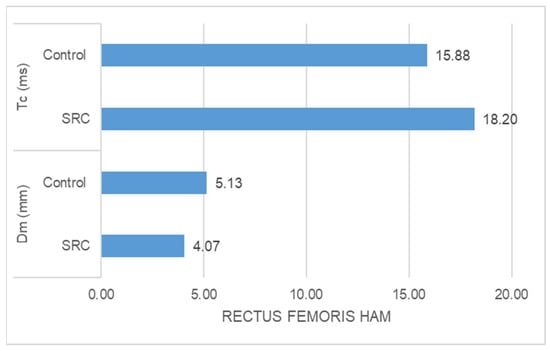
Figure 1
Open AccessArticle
Muscle Ultrasound Echo Intensity and Fiber Type Composition in Young Females
by
Gerasimos Terzis, Eftychia Vekaki, Constantinos Papadopoulos, Giorgos Papadimas and Angeliki-Nikoletta Stasinaki
J. Funct. Morphol. Kinesiol. 2024, 9(2), 64; https://0-doi-org.brum.beds.ac.uk/10.3390/jfmk9020064 - 05 Apr 2024
Abstract
Ultrasonography has been extensively used to evaluate skeletal muscle morphology. The echo intensity, i.e., the mean pixel intensity of a specific region of interest in an ultrasound image, may vary among muscles and individuals with several intramuscular parameters presumed to influence it. The
[...] Read more.
Ultrasonography has been extensively used to evaluate skeletal muscle morphology. The echo intensity, i.e., the mean pixel intensity of a specific region of interest in an ultrasound image, may vary among muscles and individuals with several intramuscular parameters presumed to influence it. The purpose of this study was to investigate the correlation between muscle echo intensity and muscle fiber type composition in humans. Thirteen female physical education students (age: 22.3 ± 5.4 years, height: 1.63 ± 0.06 m, body mass: 59.9 ± 7.4 kg) with no history of systematic athletic training participated in the study. Body composition with dual X-ray absorptiometry, leg-press maximum strength (1-RM), echo intensity, and the cross-sectional area (CSA) of the vastus lateralis (VL) muscle according to ultrasonography were measured. Muscle biopsies were harvested from the VL site where the echo intensity was measured. VL echo intensity was not significantly correlated with the percentage of type I muscle fibers or with the percentage area of type I muscle fibers. However, when VL echo intensity was corrected for the subcutaneous fat thickness at the site of the measurement, it was significantly correlated with the percentage of type I muscle fibers (r = 0.801, p < 0.01) and the percentage area of type I muscle fibers (r = 0.852, p < 0.01). These results suggest that the echo intensity of the vastus lateralis muscle corrected for the subcutaneous fat thickness at the measurement site may provide an estimate of the muscle fiber type composition, at least in young moderately trained females.
Full article
(This article belongs to the Special Issue Skeletal Muscle Mechanics)
►▼
Show Figures

Figure 1
Open AccessReview
Assessing the Effects and Challenges of Total Hip Arthroplasty before Pregnancy and Childbirth: A Systematic Review
by
Athanasios Galanis, Stefania Dimopoulou, Panagiotis Karampinas, Elias Vasiliadis, Angelos Kaspiris, Evangelos Sakellariou, Christos Vlachos, Michail Vavourakis, Eftychios Papagrigorakis, Vasileios Marougklianis, Georgios Tsalimas, Dimitrios Zachariou, Christos Patilas, Iordanis Varsamos, Ioannis Kolovos and John Vlamis
J. Funct. Morphol. Kinesiol. 2024, 9(2), 63; https://0-doi-org.brum.beds.ac.uk/10.3390/jfmk9020063 - 04 Apr 2024
Abstract
Total hip arthroplasty is indubitably one of the most performed operations worldwide. On the other hand, especially in the western world, the average age that women get pregnant has raised confoundedly. Consequently, a steadily increasing number of women become pregnant after they had
[...] Read more.
Total hip arthroplasty is indubitably one of the most performed operations worldwide. On the other hand, especially in the western world, the average age that women get pregnant has raised confoundedly. Consequently, a steadily increasing number of women become pregnant after they had hip arthroplasty surgery, with copious potential implications. The amount of knowledge on this particular field is considered inadequate in the existing literature. This paper aims to augment clinicians understanding surrounding this topic. A systematic literature review was conducted in accordance with the PRISMA guidelines. Papers from various computerized databases were scrutinized. Article selection was carried out by three authors independently employing specific pre-determined inclusion and exclusion criteria, while disagreements were elucidated with the contribution of other authors. A patently limited number of research articles were detected from our rigorous literature review, with only 12 papers meeting the inclusion criteria. The vast majority of studies were small-scale and examined confined population groups. Most studies had been performed in Finland, utilizing data from nationwide registries. Women with previous history of total hip arthroplasty feature increased rates of c-section delivery, although vaginal labor can be attempted with certain precautions. Hip implants’ survival does not appear to be affected from gestation, which is predominately well-tolerated from these women. Metal ion circulation in mothers’ blood has not been proven to trigger substantial complications concerning either mothers or offspring. It can be considered safe for women with such medical history to get pregnant; however, further multinational studies and pertinent research on this field are vital to attain more solid inferences.
Full article
(This article belongs to the Section Functional Anatomy and Musculoskeletal System)
►▼
Show Figures
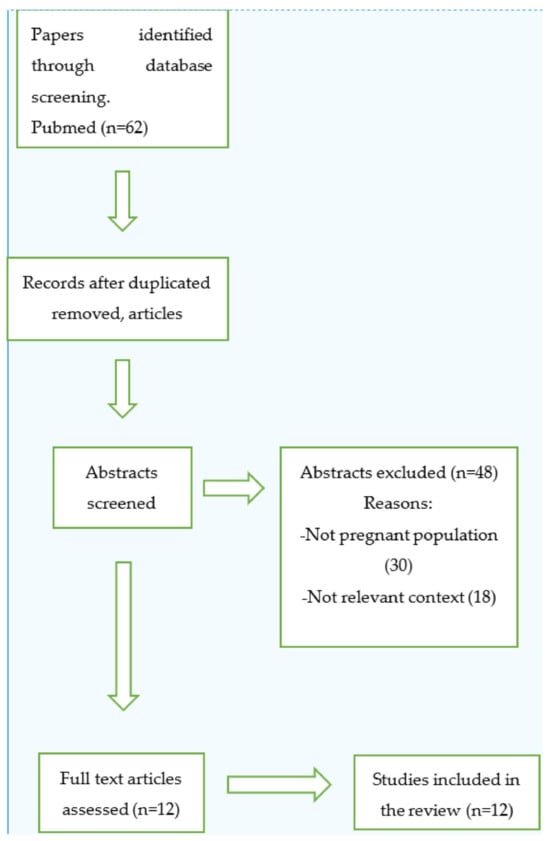
Figure 1
Open AccessArticle
The Effect of Chronic Dietary Protein Manipulation on Amino Acids’ Profile and Position Sense in the Elderly Suffering from Type 2 Diabetes Mellitus
by
Dionysia Argyropoulou, Tzortzis Nomikos, Gerasimos Terzis, Myrto Karakosta, George Aphamis, Nickos D. Geladas and Vassilis Paschalis
J. Funct. Morphol. Kinesiol. 2024, 9(2), 62; https://0-doi-org.brum.beds.ac.uk/10.3390/jfmk9020062 - 04 Apr 2024
Abstract
Dietary protein with adequate essential amino acids effectively stimulates protein synthesis and improves muscle mass. Musculoskeletal disorders in lower or upper limbs are not uncommon among patients with type II diabetes mellitus (T2DM). Therefore, this study primarily examines the effects of chronic dietary
[...] Read more.
Dietary protein with adequate essential amino acids effectively stimulates protein synthesis and improves muscle mass. Musculoskeletal disorders in lower or upper limbs are not uncommon among patients with type II diabetes mellitus (T2DM). Therefore, this study primarily examines the effects of chronic dietary protein manipulation on amino acids’ profile and position sense in the elderly suffering from T2DM. A total of 26 individuals suffering from non-insulin-dependent T2DM (age > 55 years old) participated in a 12 week nutritional intervention. The subjects were randomly assigned and the control group received 0.8–1.0 g protein/kg/day, while the intervention group received 1.2–1.5 g protein/kg/day. Lean body mass, muscle strength, and position sense were assessed at baseline, as well as at the 6th and 12th week of the intervention. Only in the intervention group, the essential amino acids intake met the current nutritional recommendations (p < 0.05), while, by the 12th week, only the intervention group showed significant improvement in the muscle strength of knee (p < 0.05) and shoulder (p < 0.05) extension. On the contrary, in the control group, a significant decline in appendicular lean mass (p < 0.05) was observed by the 12th week. Position sense at the knee joint revealed a tendency for improvement in the intervention group by the 12th week (main effect of time p = 0.072). In the present investigation, it was revealed that the higher protein intake in the intervention group seemed to have positive effects on muscle strength and nearly positive effects on position sense.
Full article
(This article belongs to the Special Issue Research on Sports Nutrition: Body Composition and Performance 3.0)
►▼
Show Figures

Figure 1
Highly Accessed Articles
Latest Books
E-Mail Alert
News
Topics
Topic in
Behavioral Sciences, EJIHPE, JFMK, Sports, Sustainability
Interdisciplinary Approaches to Sports in the 21st Century
Topic Editors: Paweł A. Piepiora, Zbigniew Norbert PiepioraDeadline: 31 December 2024
Topic in
Diagnostics, Healthcare, JCM, JFMK, Medicina
New Advances in Musculoskeletal Disorders
Topic Editors: Dohyung Kee, Inseok LeeDeadline: 10 January 2025

Conferences
Special Issues
Special Issue in
JFMK
Efficiency in Kinesiology: Innovative Approaches in Enhancing Motor Skills for Athletic Performance 2.0
Guest Editor: Diego MinciacchiDeadline: 29 April 2024
Special Issue in
JFMK
Research on Sports Nutrition: Body Composition and Performance 3.0
Guest Editor: Jose AntonioDeadline: 30 May 2024
Special Issue in
JFMK
Optimizing Strength and Resistance Training: Best Practices Applied to Sports Disciplines and Performance
Guest Editors: Luis Manuel Martínez Aranda, Javier Raya-GonzálezDeadline: 29 June 2024
Special Issue in
JFMK
Innovations in Youth and Adolescent Athlete Injury Prevention and Rehabilitation
Guest Editor: John NylandDeadline: 30 July 2024







